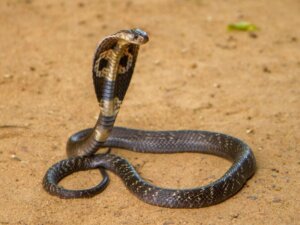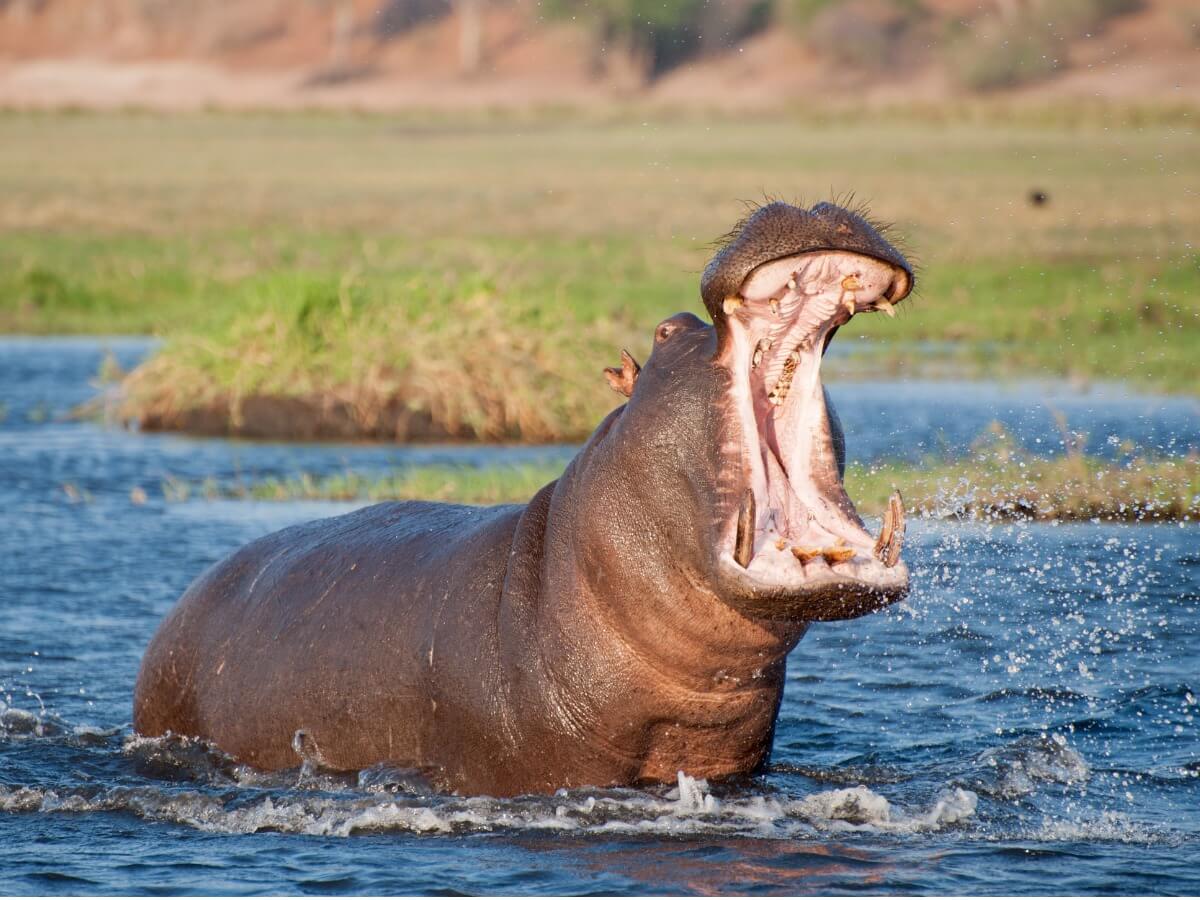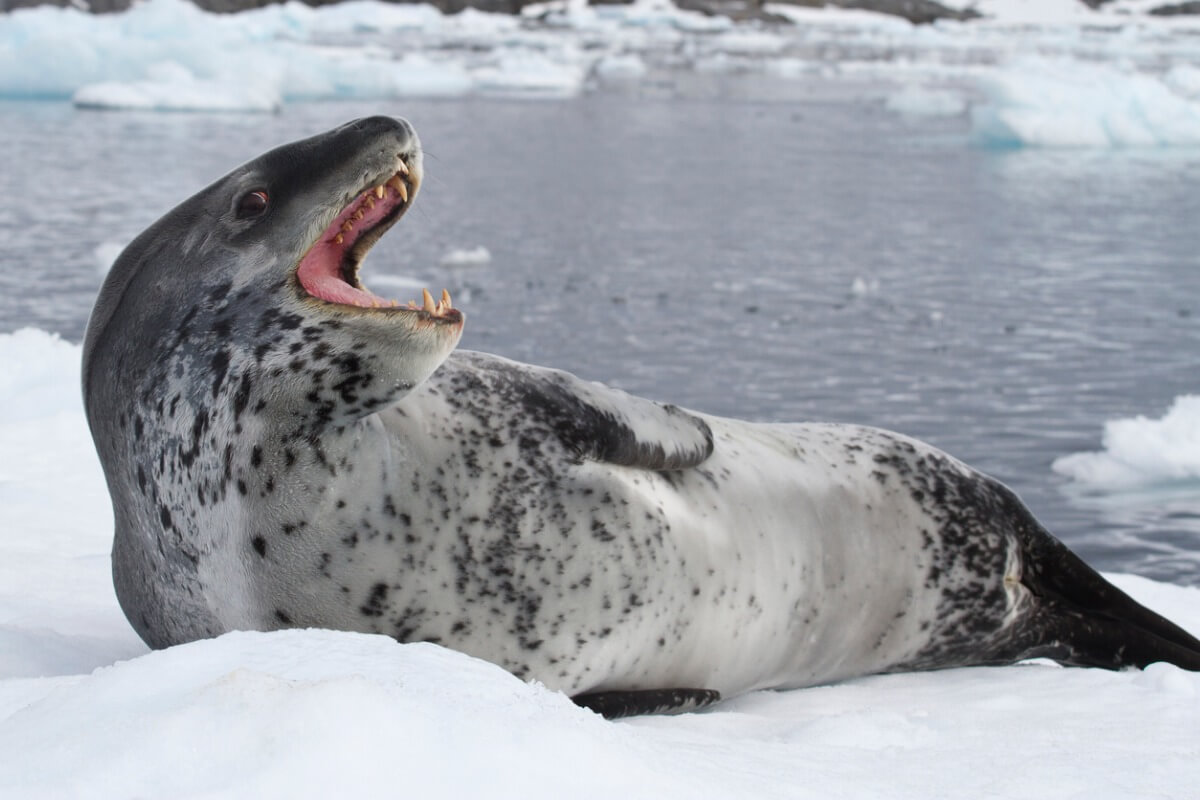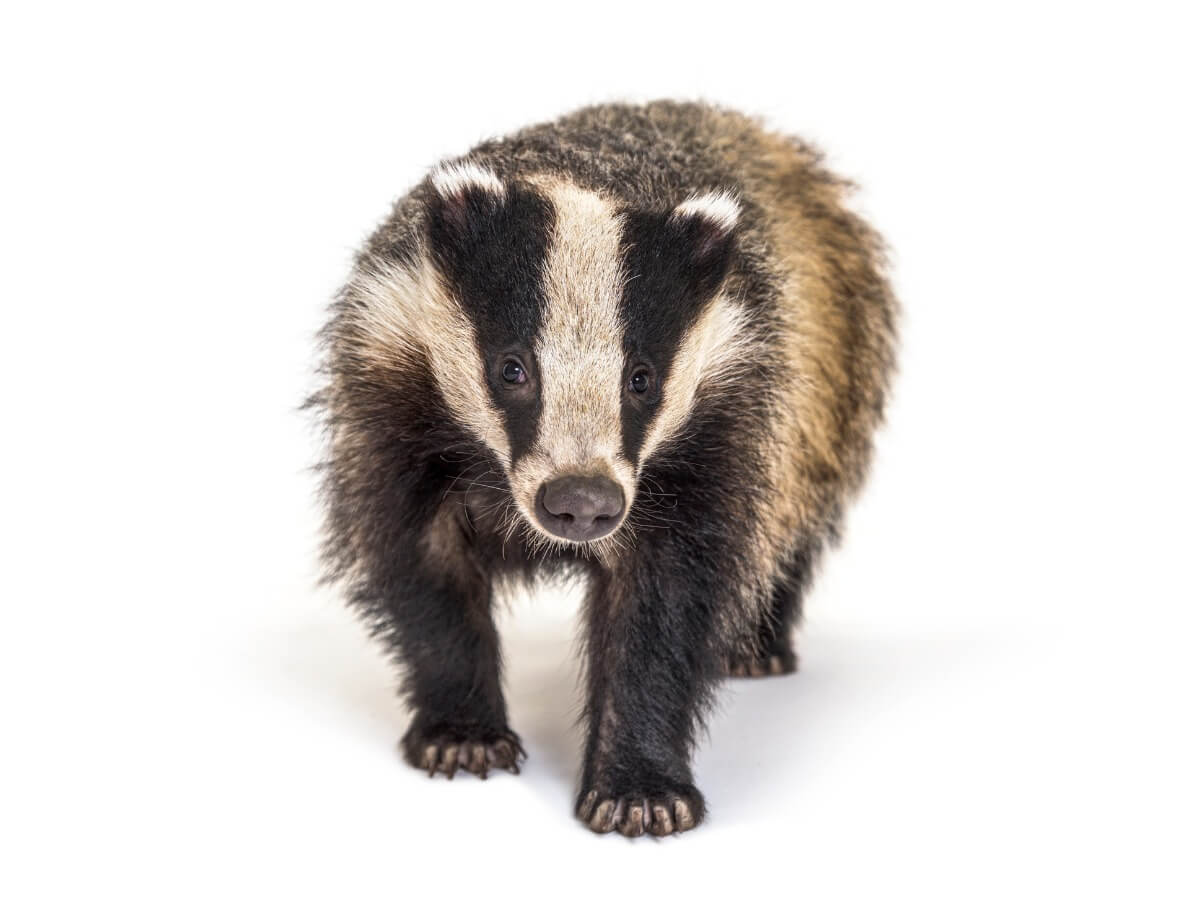The 10 Most Aggressive Animals in the World


Written and verified by the psychologist Sara González Juárez
The most aggressive animals in the world could form an endless list, but if we use certain objective criteria, then we can narrow down the list. In this article, we’ll take the term aggressiveness to mean the absence of fear of confronting beings that surpass them in size, strength, or lethality. In addition, we’ll also factor in the predatory capacity of other dangerous animals.
Nature is an unwelcoming place, where aggressiveness may be the only way to survive in certain situations, either for protection or for the simple need to eat. Below, you can learn about some characteristic examples of this temperament.
The 10 most aggressive animals in the world
You might think that the animals you’re going to find here will be huge with sharp claws and fangs. However, don’t lose sight of the fact that aggressiveness often doesn’t require having natural weapons at their disposal. Many animals on this list will surprise you!
1. Hippopotamuses (Hippopotamus amphibius)
Despite being herbivores and weighing an average of 500 kilograms (1100 pounds), hippopotamuses compete in aggressiveness with predators such as lions and crocodiles. It’s a solitary and extremely territorial animal, as it needs large amounts of food per day and is responsible for clearing its area of crocodiles, alligators, or other animals that approach the shore with force.
The hippopotamus is the most lethal large mammal in the world, with an estimated 500 people dying from encounters with it each year in Africa.

2. King cobra (Ophiophagus hannah)
Ophidians, in general, need to be aggressive in order to eat. However, the case of the king cobra is special because it’s ophiophagous, which means that other snakes are present in its diet (even those of its own species). Obviously, to hunt snakes, an animal can’t be docile!
Their fangs inject a large amount of neurotoxic venom, which progressively paralyzes the victim until it causes cardiac or respiratory arrest.

3. Wolverine (Gulo gulo)
The wolverine is a mustelid famous for its incredible strength and ferocity. It feeds on prey much larger than itself, such as ungulates or other carnivores. It’s a solitary, omnivorous, and scavenging animal, and, if it doesn’t find prey, it feeds on berries, eggs, and carcasses.
4. Leopard seal (Hydrurga leptonyx)
These seals are among the fiercest of their family, as they need to eat large amounts of live food in the Antarctic habitats they inhabit. They hunt anything that fits in their mouths (squid, fish and even carrion) and are agile swimmers ready to catch the fastest prey.
Their large size (a large female can reach 4 meters and 500 kilos – 13 feet and 1100 pounds) allows these mammals to prey on penguins, including the emperor penguin. In addition, the great speed they reach underwater gives them the ability to hunt their victims in mid-swim.
These mammals may even prey on pups of other seal species.

5. Asian giant hornet (Vespa mandarinia)
This enormous hymenopteran, which reaches 5 centimeters (2 inches)in length, is capable of hunting in groups when the colony is large enough. Its venom is very potent and dissolves the tissues of its prey to eat them more easily.
This hornet invades honeybee honeycombs to feed and the data are terrifying: 10 hornets can kill 10,000 bees. The species even attacks yellow hornets (Vespa simillima xanthoptera) to eat their larvae. When a human being receives many simultaneous stings, they could have serious problems.

6. Mongooses (Herpestidae)
This family is very similar to the mustelids and is also known for its ferocity. However, it is one of those cases in which it could not be otherwise: the mongooses have to face the king cobra, which preys on them. They are immune to its poison and do not hesitate to stand up to it, even winning the assault.

7. Honey badger (Mellivora capensis)
As you can see, mustelids have a big presence on this list, as their life habits require them to be among the most aggressive animals in existence. The honey badger is one of the best known of the group, as it has jaws capable of piercing the shell of a tortoise, as well as standing out for its taste for attacking beehives to eat the honey.
8. Baboons
These primates belong to the Cercopithecidae family. Their aggressiveness, besides being due to their opportunistic feeding, is necessary for survival in the strong hierarchies they form within their groups. Sometimes, the challenge itself lies in the social structure of the species.
The social organization of baboons is characterized by the formation of harems by dominant males and these are formed through aggression.

9. Badger (Meles meles)
This gregarious and nocturnal mammal also has the habit of attacking beehives. Its aggressiveness is defensive, as it has skin strong enough to resist attacks as well as powerful jaws, so that they can escape from any attack and do quite a bit of damage at the same time.

10. Asian house shrew (Suncus murinus)
The Soricidae family, to which shrews belong (like this one, whose name is misleading), are small mammals with an incredibly fast metabolism that forces them to eat constantly in order to basically not starve to death. For example, a 30-gram specimen must consume 90 grams (3 times its weight) of insects per day to remain healthy.
The house shrew feeds primarily on insects. Its enormous voracity, coupled with its strong territoriality, makes it a strong defender of its area. It expels both its conspecifics and possible predators, which it confronts with no regard for its safety.
Aggressiveness in animals is a misleading term and quite susceptible to anthropomorphic overtones. When we talk about the most aggressive animals, we tend to include data on attacks against humans, but we shouldn’t lose sight of the fact that most of them have to defend themselves against us. This doesn’t make them evil beings, simply animals to avoid when we invade their home.
The most aggressive animals in the world could form an endless list, but if we use certain objective criteria, then we can narrow down the list. In this article, we’ll take the term aggressiveness to mean the absence of fear of confronting beings that surpass them in size, strength, or lethality. In addition, we’ll also factor in the predatory capacity of other dangerous animals.
Nature is an unwelcoming place, where aggressiveness may be the only way to survive in certain situations, either for protection or for the simple need to eat. Below, you can learn about some characteristic examples of this temperament.
The 10 most aggressive animals in the world
You might think that the animals you’re going to find here will be huge with sharp claws and fangs. However, don’t lose sight of the fact that aggressiveness often doesn’t require having natural weapons at their disposal. Many animals on this list will surprise you!
1. Hippopotamuses (Hippopotamus amphibius)
Despite being herbivores and weighing an average of 500 kilograms (1100 pounds), hippopotamuses compete in aggressiveness with predators such as lions and crocodiles. It’s a solitary and extremely territorial animal, as it needs large amounts of food per day and is responsible for clearing its area of crocodiles, alligators, or other animals that approach the shore with force.
The hippopotamus is the most lethal large mammal in the world, with an estimated 500 people dying from encounters with it each year in Africa.

2. King cobra (Ophiophagus hannah)
Ophidians, in general, need to be aggressive in order to eat. However, the case of the king cobra is special because it’s ophiophagous, which means that other snakes are present in its diet (even those of its own species). Obviously, to hunt snakes, an animal can’t be docile!
Their fangs inject a large amount of neurotoxic venom, which progressively paralyzes the victim until it causes cardiac or respiratory arrest.

3. Wolverine (Gulo gulo)
The wolverine is a mustelid famous for its incredible strength and ferocity. It feeds on prey much larger than itself, such as ungulates or other carnivores. It’s a solitary, omnivorous, and scavenging animal, and, if it doesn’t find prey, it feeds on berries, eggs, and carcasses.
4. Leopard seal (Hydrurga leptonyx)
These seals are among the fiercest of their family, as they need to eat large amounts of live food in the Antarctic habitats they inhabit. They hunt anything that fits in their mouths (squid, fish and even carrion) and are agile swimmers ready to catch the fastest prey.
Their large size (a large female can reach 4 meters and 500 kilos – 13 feet and 1100 pounds) allows these mammals to prey on penguins, including the emperor penguin. In addition, the great speed they reach underwater gives them the ability to hunt their victims in mid-swim.
These mammals may even prey on pups of other seal species.

5. Asian giant hornet (Vespa mandarinia)
This enormous hymenopteran, which reaches 5 centimeters (2 inches)in length, is capable of hunting in groups when the colony is large enough. Its venom is very potent and dissolves the tissues of its prey to eat them more easily.
This hornet invades honeybee honeycombs to feed and the data are terrifying: 10 hornets can kill 10,000 bees. The species even attacks yellow hornets (Vespa simillima xanthoptera) to eat their larvae. When a human being receives many simultaneous stings, they could have serious problems.

6. Mongooses (Herpestidae)
This family is very similar to the mustelids and is also known for its ferocity. However, it is one of those cases in which it could not be otherwise: the mongooses have to face the king cobra, which preys on them. They are immune to its poison and do not hesitate to stand up to it, even winning the assault.

7. Honey badger (Mellivora capensis)
As you can see, mustelids have a big presence on this list, as their life habits require them to be among the most aggressive animals in existence. The honey badger is one of the best known of the group, as it has jaws capable of piercing the shell of a tortoise, as well as standing out for its taste for attacking beehives to eat the honey.
8. Baboons
These primates belong to the Cercopithecidae family. Their aggressiveness, besides being due to their opportunistic feeding, is necessary for survival in the strong hierarchies they form within their groups. Sometimes, the challenge itself lies in the social structure of the species.
The social organization of baboons is characterized by the formation of harems by dominant males and these are formed through aggression.

9. Badger (Meles meles)
This gregarious and nocturnal mammal also has the habit of attacking beehives. Its aggressiveness is defensive, as it has skin strong enough to resist attacks as well as powerful jaws, so that they can escape from any attack and do quite a bit of damage at the same time.

10. Asian house shrew (Suncus murinus)
The Soricidae family, to which shrews belong (like this one, whose name is misleading), are small mammals with an incredibly fast metabolism that forces them to eat constantly in order to basically not starve to death. For example, a 30-gram specimen must consume 90 grams (3 times its weight) of insects per day to remain healthy.
The house shrew feeds primarily on insects. Its enormous voracity, coupled with its strong territoriality, makes it a strong defender of its area. It expels both its conspecifics and possible predators, which it confronts with no regard for its safety.
Aggressiveness in animals is a misleading term and quite susceptible to anthropomorphic overtones. When we talk about the most aggressive animals, we tend to include data on attacks against humans, but we shouldn’t lose sight of the fact that most of them have to defend themselves against us. This doesn’t make them evil beings, simply animals to avoid when we invade their home.
All cited sources were thoroughly reviewed by our team to ensure their quality, reliability, currency, and validity. The bibliography of this article was considered reliable and of academic or scientific accuracy.
- Suncus murinus (Asian house shrew). (s. f.). Animal Diversity Web. Recuperado 2 de agosto de 2021, de https://animaldiversity.org/accounts/Suncus_murinus/#behavior
- Ophiophagus hannah (Hamadryad, King Cobra). (s. f.). Animal Diversity Web. Recuperado 2 de agosto de 2021, de https://animaldiversity.org/accounts/Ophiophagus_hannah/
- Qi, Z. Q., Yonaha, K., Tomihara, Y., & Toyama, S. (1994). Characterization of the antihemorrhagic factors of mongoose (Herpestes edwardsii). Toxicon, 32(11), 1459-1469.
This text is provided for informational purposes only and does not replace consultation with a professional. If in doubt, consult your specialist.








